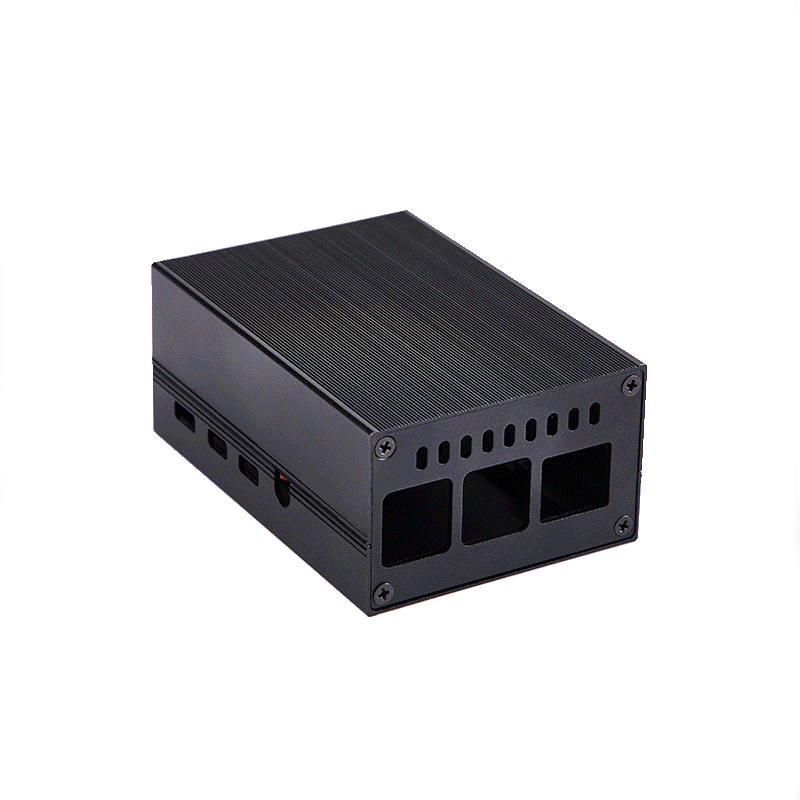- sales/support
Google Chat: zj734465502@gmail.com
- sales
+86-0755-88291180
- sales01
sales01@spotpear.com
- sales02
dragon_manager@163.com
- support
services01@spotpear.com
- CEO-Complaints
manager01@spotpear.com
- sales/support
WhatsApp:13246739196
- HOME
- >
- ARTICLES
- >
- Jetson Series
- >
- Jetson Kits
DonkeyCar for Jetson Nano-Setup Jetson Nano
Guides of DonkeyCar
- Setup Jetson Nano
- Setup Linux PC
- WEB Control
- Calibrate DonkeyCar
- Teleoperation
- Data Collection
- Train Data
- Auto-Driving
- JetRacer AI Kit WIKI
Step 1. Install libraries
Please make sure that you have install image and it could start normally. Open terminal and install libraries as below
sudo apt-get update sudo apt-get upgrade sudo apt-get install build-essential python3 python3-dev python3-pip python3-pandas python3-opencv python3-h5py libhdf5-serial-dev hdf5-tools nano ntp
Step 2. Setup virtual environment
sudo pip3 install virtualenv python3 -m virtualenv -p python3 env echo "source env/bin/activate" >> ~/.bashrc source ~/.bashrc
Step3. Install OpenCV
- The first step of Insalling Opencv is to define the Swap-space
- Jetson Nano has only 4GB RAM, it is not engough for building Opencv. To avoid from memory crashing, we should define swap-space for Jetson Nano
# Turn off swap sudo swapoff /var/swapfile # Allocates 4G of additional swap space at /var/swapfile sudo fallocate -l 4G /var/swapfile # Permissions sudo chmod 600 /var/swapfile # Make swap space sudo mkswap /var/swapfile # Turn on swap sudo swapon /var/swapfile # Automount swap space on reboot sudo bash -c 'echo "/var/swapfile swap swap defaults 0 0" >> /etc/fstab' # Reboot sudo reboot
- Install libraries for OpenCV
# Update sudo apt-get update sudo apt-get upgrade # Pre-requisites sudo apt-get install build-essential cmake unzip pkg-config sudo apt-get install libjpeg-dev libpng-dev libtiff-dev sudo apt-get install libavcodec-dev libavformat-dev libswscale-dev libv4l-dev sudo apt-get install libxvidcore-dev libx264-dev sudo apt-get install libgtk-3-dev sudo apt-get install libatlas-base-dev gfortran sudo apt-get install python3-dev
- Download source codes of OpenCV
# Create a directory for opencv mkdir -p projects/cv2 cd projects/cv2 # Download sources wget -O opencv.zip https://github.com/opencv/opencv/archive/4.1.0.zip wget -O opencv_contrib.zip https://github.com/opencv/opencv_contrib/archive/4.1.0.zip # Unzip unzip opencv.zip unzip opencv_contrib.zip # Rename mv opencv-4.1.0 opencv mv opencv_contrib-4.1.0 opencv_contrib
- Enter the virtual environment env
source ~/env/bin/activate # Install Numpy pip install numpy
- Configure Cmake
# Create a build directory
cd projects/cv2/opencv
mkdir build
cd build
# Setup CMake
cmake -D CMAKE_BUILD_TYPE=RELEASE \
-D CMAKE_INSTALL_PREFIX=/usr/local \
-D INSTALL_PYTHON_EXAMPLES=ON \
-D INSTALL_C_EXAMPLES=OFF \
-D OPENCV_ENABLE_NONFREE=ON \
# Contrib path
-D OPENCV_EXTRA_MODULES_PATH=~/projects/cv2/opencv_contrib/modules \
# Your virtual environment's Python executable
# You need to specify the result of echo $(which python)
-D PYTHON_EXECUTABLE=~/env/bin/python \
-D BUILD_EXAMPLES=ON ../opencv
- Comple the OpenCV by the following commands
- Note that if you didn't setup the swap-space, the compilation process may fail because of memory crash.
make -j2
- Install Opencv
# Install OpenCV sudo make install sudo ldconfig
- Link the OpenCV libraries to the virtual environment virtualenv
# Go to the folder where OpenCV's native library is built cd /usr/local/lib/python3.6/site-packages/cv2/python-3.6 # Rename mv cv2.cpython-36m-xxx-linux-gnu.so cv2.so # Go to your virtual environments site-packages folder cd ~/env/lib/python3.6/site-packages/ # Symlink the native library ln -s /usr/local/lib/python3.6/site-packages/cv2/python-3.6/cv2.so cv2.so
- Run the following command and you will get information as below:
ls -la
total 48 drwxr-xr-x 10 user user 4096 Jun 16 13:03 . drwxr-xr-x 5 user user 4096 Jun 16 07:46 .. lrwxrwxrwx 1 user user 60 Jun 16 13:03 cv2.so -> /usr/local/lib/python3.6/site-packages/cv2/python-3.6/cv2.so -rw-r--r-- 1 user user 126 Jun 16 07:46 easy_install.py drwxr-xr-x 5 user user 4096 Jun 16 07:47 pip drwxr-xr-x 2 user user 4096 Jun 16 07:47 pip-19.1.1.dist-info drwxr-xr-x 5 user user 4096 Jun 16 07:46 pkg_resources drwxr-xr-x 2 user user 4096 Jun 16 07:46 __pycache__ drwxr-xr-x 6 user user 4096 Jun 16 07:46 setuptools drwxr-xr-x 2 user user 4096 Jun 16 07:46 setuptools-41.0.1.dist-info drwxr-xr-x 4 user user 4096 Jun 16 07:47 wheel drwxr-xr-x 2 user user 4096 Jun 16 07:47 wheel-0.33.4.dist-info
- Run python, and test the OpenCv
import cv2 # Should print 4.1.0 print(cv2.__version__)
(env) jetson@jetson:~$ python Python 3.6.8 (default, Jan 14 2019, 11:02:34) [GCC 8.0.1 20180414 (experimental) [trunk revision 259383]] on linux Type "help", "copyright", "credits" or "license" for more information. >>> import cv2 >>> print(cv2.__version__) 4.1.0 >>> quit()
Step 4. Install DonkeyCar Python codes
- Clone donkeycar codes from Github
cd ~/projects https://github.com/waveshare/donkeycar cd donkeycar git checkout master pip install -e .[nano] pip install --extra-index-url https://developer.download.nvidia.com/compute/redist/jp/v42 tensorflow-gpu==1.13.1+nv19.3
Step 5. Create DonkeyCar
- Create donkeycar example
donkey createcar --path ~/mycar
After runing, files will be generated and saved in the directly ~/mycar
- Open he myconfig.py file and modify the camera parameters.
nano myconfig.py
- The camera we use is based on Sony IMX219, so we need to change it to CSIC and set the resolution to 224*224
#CAMERA CAMERA_TYPE = "CSIC" # (PICAM|WEBCAM|CVCAM|CSIC|V4L|MOCK) IMAGE_W = 224 IMAGE_H = 224
TAG:
Jetson Nano 1.54inch OLED
Raspberry Pi OpenWrt Tutorial 1
Secondary Screen
spotpear
Raspberry Pi 5/4B not boot To update BootLoader EEPROM Tutorial
Jetson Nano Development Kit JETSON-NANO-DEV-KIT Replace For Jetson-Nano-Developer-Kit-B01
Arduino MEGA2560 R3
Raspberry Pi 5 Official Red-White Case
Raspberry Pi 5 Official Original AI Kit Hailo8l 13Tops/26Tops PCIe M.2 HAT+ Board For Pi5
UPS HAT D
SpotPear
MiniPCIe Interface 2 CH CAN Card USB CAN Multiple Protection Circuits For Linux/Windows
Raspberry Pi DS3231
3.5 inch LCD Computer CPU GPU RAM Monitor PC USB Secondary Display Screen
USB To CAN
Raspberry Pi IR Thermal Imagi
Pi5
RP2040 Camera
SpotPear
Luckfox Pico
TAG:
XIAO RA4M1 Tiny SuperMini Arduino Uno R4 SeeedStudio R7FA4M1
Rotary LCD
Raspberry Pi Official Original USB 3 Hub 4 High Speed USB
Raspberry Pi Monitor DisplayScreen 15.6 inch LCD
Jetson Nano 1.54inch OLED
Raspberry Pi
Raspberry Pi 5 PoE HAT G Power over Ethernet 802.3af at
Weather trinket
Pi5 Case
Pi5
Raspberry Pi 5
Raspberry Pi Game
Raspberry Pi Pico 2 RP2350 bit board Size & Port high Compatible With BBC Micro:bit
MEGA2560 R3
Raspberry Pi 5 IMX219
4.26inch E-Paper 800x480
AV to LVDS
7inch Monitor Display
SpotPear
Raspberry Pi 5 Official Red-White Case




